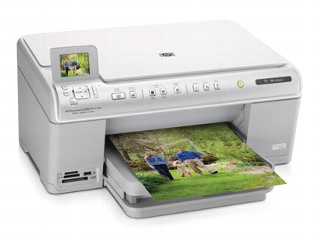
I needed a new color printer. My current print-scan-fax model was severely handicapped and had lost its ability to do two out of the three all-in-one things it was designed to perform. So with a budget in mind, I headed over to Best Buy to pick out the model that was right for me. Little did I know that when I arrived at the store, I would be overwhelmed with a seemingly endless number of choices. There are a ridiculously large number of printers available today with a staggering array of features that have cool names and questionable functionality. I needed help and I needed it fast. I made a quick exit from the store and on the ride back to my house, I realize that I was facing a similar challenge to the one many B2B consumers face every day: How to make a buying decision with limited knowledge of a product and many competitive solutions and features available. I decided that the best way to handle the challenge was to act like a B2B prospect and jump on the web to make a more informed decision. But a funny thing happened to me as I began my search. I realized that all content is not created equally.
B2B research has consistently shown that the value of content to a prospect is based on three major characteristics of that content – the source, the topic or focus, and the format (whitepaper, video, podcast, etc). When I looked at this information in the past it seemed to make sense that source and topic are far and away the most important attributes. It is clear that people want information that they can trust on the specific topic that they desire, and my printer search only re-enforced this. Like most B2B consumers, I cared little about the format of this material if it was on topic and offered by a trusted source. This was important, because as I entered search terms like “Printer Reviews” and “Best Printers” into Google, I was presented with a literally millions of results. I hadn’t noticed the automatic filtering I was doing as I scanned results targeting my specific search. I scanned the first couple of pages of results and looked exclusively at information from trusted sources; skipping over advice from questionable sources.
Of course, the comparison of a printer purchase with acquisition of a typical B2B solution is flawed. The price point is too low and there are testing sites available to do side by side comparisons of printers – something that is not easy to find or simply does not exist when it comes to selecting a server virtualization tool or a process control solution. So what is our marketing lesson here? If your market is filled with lots of choices and feature sets with similar names, make sure that you are a part of creating content that prospects can trust and use to make a more informed decision. Understand their buying criteria and influence it with material that educates and helps move readers ahead in their decision making process. With a lack of testing and comparison sites available for B2B solutions, you can directly influence buying decisions by being a trusted source of on target information. For me, a stop at www.consumerreports.org and then a few forums where I could check out support issues left me confident in my final choice – the HP C6380. Now, if I could only decide on which ink to use…







